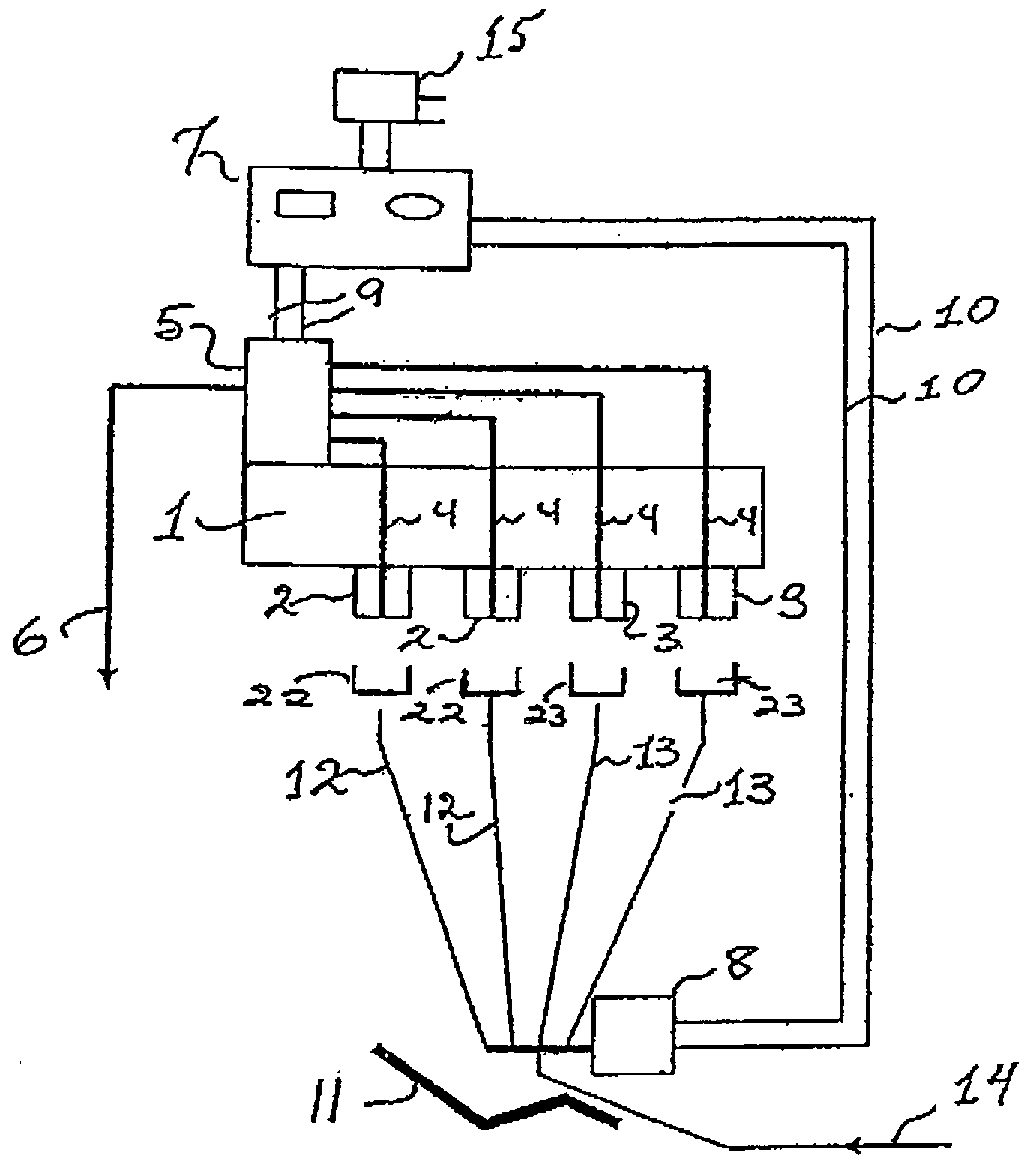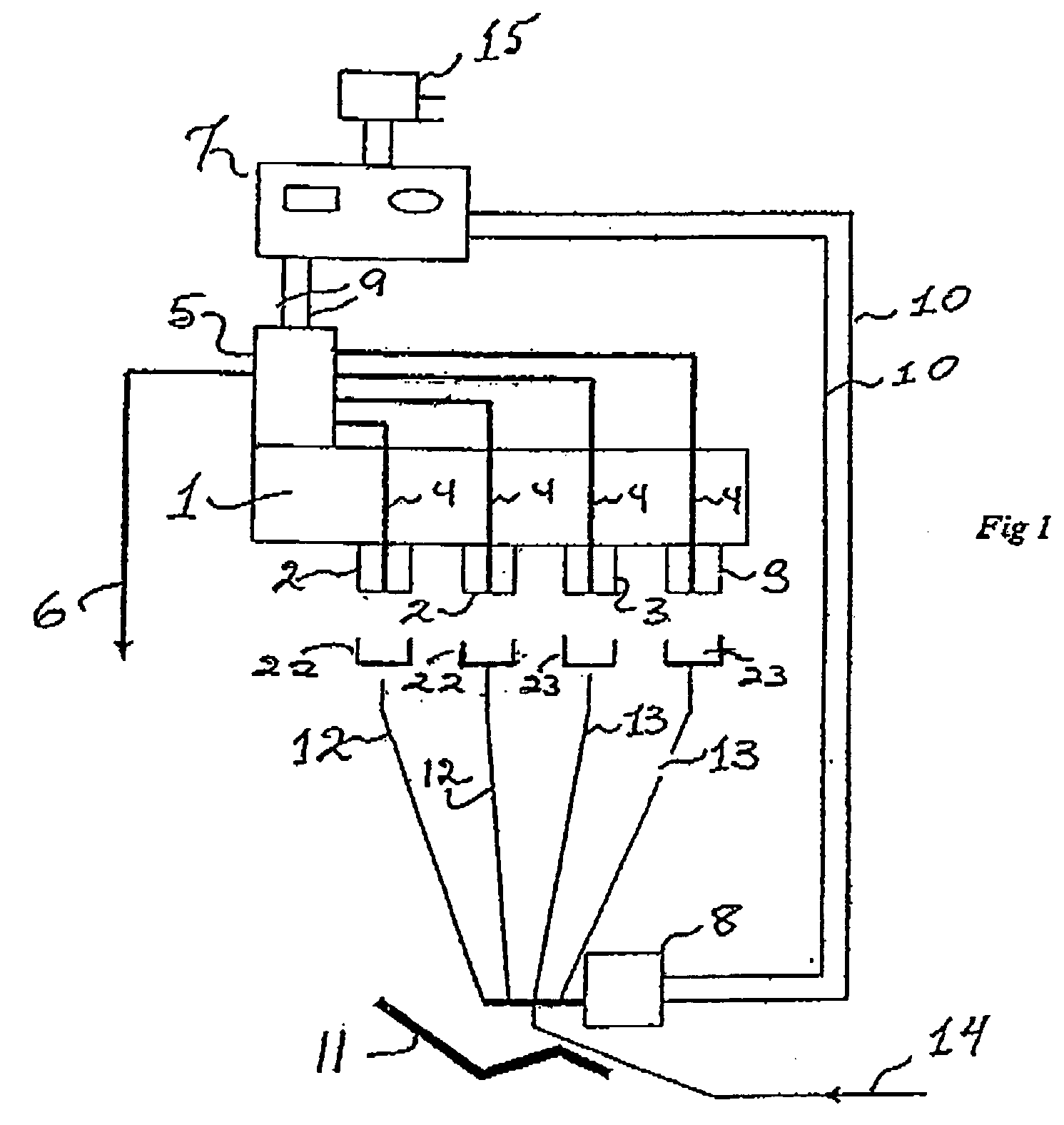Method for sanitation of dental water lines
a technology for dental water lines and sanitation, applied in water/sludge/sewage treatment, coffins, boring tools, etc., can solve the problems of toxic remains, too become contaminated, and limited contact time between ozone and harmful biofilm, etc., to achieve the effect of increasing contact tim
- Summary
- Abstract
- Description
- Claims
- Application Information
AI Technical Summary
Benefits of technology
Problems solved by technology
Method used
Image
Examples
Embodiment Construction
[0012]Referring to the schematic in FIG. 1, the invention comprises a manifold (1) that contains one or more (typically 2) male connectors (2) onto which can be screwed female connectors 22 typically found on the ends of existing dental unit waterlines (12) and which would normally be connected to high-speed dental drill handpieces (not shown). The manifold also contains one or more (typically 2) male connectors (3) to which can be screwed female connectors 23 typically found on the ends of existing dental unit waterlines (13) and which would normally be connected to air / water syringe handpieces (not shown). Tubes (4) carry water from the connectors (2, 3) to an electrically operated solenoid valve (5) attached to the manifold (1), which when open, flushes water to a drain connector (6). The electrically operated solenoid valve (5) is connected by wires (9) to a programmable timer switch (7) which automatically controls the opening of the valve. The programmable timer switch (7) is ...
PUM
| Property | Measurement | Unit |
|---|---|---|
| time | aaaaa | aaaaa |
| speed | aaaaa | aaaaa |
| flow rates | aaaaa | aaaaa |
Abstract
Description
Claims
Application Information
 Login to View More
Login to View More - R&D
- Intellectual Property
- Life Sciences
- Materials
- Tech Scout
- Unparalleled Data Quality
- Higher Quality Content
- 60% Fewer Hallucinations
Browse by: Latest US Patents, China's latest patents, Technical Efficacy Thesaurus, Application Domain, Technology Topic, Popular Technical Reports.
© 2025 PatSnap. All rights reserved.Legal|Privacy policy|Modern Slavery Act Transparency Statement|Sitemap|About US| Contact US: help@patsnap.com


